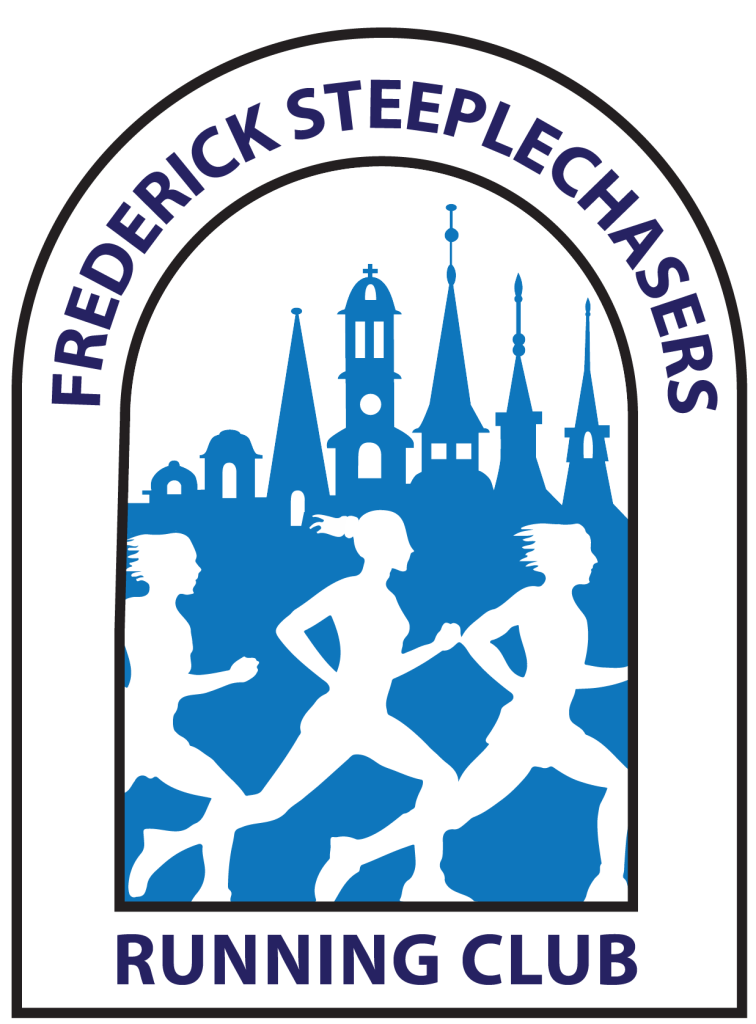by Nicole Davis, DPT
Sooner or later it happens to even elite runners. Maybe it’s sudden and dramatic – the flip of an ankle on a section of raised sidewalk in Downtown Frederick. Maybe it’s a little twinge of the shin during the final weeks of training for your next half marathon. Ouch! Now what?
Runners, as a general rule, seem to be very good at denial, which is exactly the wrong thing to do. The longer you wait to address a problem, the longer it will take to fix it. Shin splints for a week will take a week or two to fix. Shin splints for nine weeks will take nine months to fix.
So what should you do?
If you cannot bear weight on the injured limb
Do not pass GO, do not collect $100, go straight to a doctor. You would think this was obvious, but apparently not. If there are visible bones, or really odd angles in limbs where there shouldn’t be, head to an ER. Otherwise, I generally prefer an urgent care. The wait is shorter, and the bill cheaper. Most likely, that ER or urgent care will x-ray you, temporarily patch you up, and send you home with instructions to see an orthopedist.
Pro tip on getting in to see that orthopedist… Most orthopedists keep several appointment slots open for more urgent patients. To get one of those slots, call your orthopedist’s office the moment they open. (A few of the local doctors even open their phone lines before they open for appointments. Only way to find out is to call early and see if you get a human instead of an answering machine.) Be sure to tell the receptionist that you (1) were seen in the ER/urgent care and (2) that doctor told you to see an orthopedist. (Only of course if these things are actually true.) This will bump you into that urgent patient category. Most will be able to get you in within 48 hours. That’s fine.
For everything else
The waters are a little murkier. Orthopedist, physical therapist, wait it out?
Orthopedists are good for ruling out and dealing with things that a physical therapist can’t fix – a torn meniscus or ligament rupture, for example. Head to the orthopedist for:
- A sudden injury in which you felt/heard an obvious snap or pop
- A sudden or gradual injury (particularly knees) with locking, clicking, etc.
- Pain in the calf, and you cannot do a heel raise
Physical therapists are a good place to start for pretty much everything else, from moderate ankle sprains to the myriad of running related pains in the lower limbs or hips. A physical therapist specializing in runners is your best chance at figuring out not only what the injury is, buy why you got it.
While Maryland law allows you to see a physical therapist without having to see an MD first, your insurance company may not. The receptionist at your chosen physical therapy facility can help you figure this out.
But do you need to see anyone at all?
Not always.
At the first twinge (that doesn’t fall into one of the above categories), I recommend taking a couple days off from running. Then, if you can walk without pain or a limp, try a short, very easy test run on flat ground. If that goes well, try a bit longer run the next time out. If all goes well, take another week of reduced mileage and/or intensity, then continue with your regular running.
If that first trial run still causes pain, take another three to five days off, before trying another test run. If the second trial run goes okay, take about two weeks to ramp up to your usual training. However, you would be wise to look at your training plan more carefully. Chances are high you got the initial injury because of a training error – usually either progressing too quickly, doing too much high intensity work, or not allowing for enough recovery time.
If two weeks after the initial pain starts you are still struggling to run, generally it’s time to seek out professional help. If your pain goes away, but then returns a second or third time within a year, see a physical therapist to help you figure out why.
But runners like to run, and the most common question I get is, “Can I run through my injury?”
The answer is, for most things, sort of. Certainly, if you are seeing a professional, follow their advice. But for everyone else, generally:
You can run as long as you can find a way to do it that doesn’t cause pain either during your run, or the morning after, AND your injury seems to be gradually getting better over time.
Usually, this means that you need to drop speed and hill work. Often this means decreasing your overall mileage. Shortening your long runs may be necessary. Inserting short walk breaks into your run can also help you get more distance before the injured body part gets cranky. I’m a big fan of reverse ladders for injured runners. For example, run 2 miles, walk 1 minute, run 1.5 miles, walk 1 minute, run 1 mile, walk 1 minute, etc. While you are running, a little initial soreness that goes away after a mile or so is okay. A sense that the body part doesn’t feel quite right is okay. A random, occasional twinge when you step a certain way is okay (though try not to step that way.) As soon as you cross into the realm of “okay that’s definitely pain,” or you have a limp, you should probably stop.
But my race is in two weeks!
To race or not to race, the runner’s dilemma. Your number one goal is to get to the starting line and hopefully to finish the race. Your chances of achieving that goal are much higher if you pause and address the issue, rather than trying to train through it. If you are fortunate enough for the issue to resolve before race day, don’t try to make up for lost training days. I am living proof that you can miss the entire last month of training before a 50k and still finish. Trying to make up lost training almost always guarantees you won’t make it to the starting line. You may however need to adjust your race strategy and goals.
Injuries happen. It’s just a part of being a runner, no matter how diligent you are with preventative measures. But by dealing with the issue quickly and, if necessary, seeking the right professional help, you can minimize your time in the runner’s timeout chair.
Nicole Davis, DPT is a biomechanical engineer turned physical therapist, specializing in running injury prevention and management. She is also an RRCA Level II Certified Running Coach, coaching both youth and adult distance runners.

